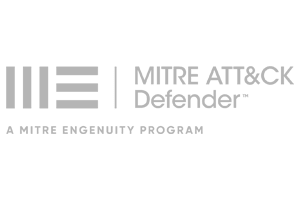Skills Development and Career Path Subscription
Are you ready to learn professional skills and become the smartest Cyber Fighter in the room?
The CYBER RANGES Skills Development subscription represents amazing value for money
Skills Development + Career Path

MITRE ATT&CK Simulations Gold

MITRE ATT&CK Simulations Platinum

Skills Development + Career Path Subscription
Career Path Development
Total Number of playlists: 4 (to date)
Total Number of scenarios: 38 (to date)
Introduction To Cybersecurity
Networking Fundamentals
Linux Fundamentals
Windows Fundamentals
Introduction to Powershell
Nmap for Penetration Testing
Ethical Ninja Hacking Series
Password Attacks – Credential BruteForcing
Exploiting Linux Vulnerabilities
Exploiting Web Apps
MITRE ATT&CK Hacking Challenges – Easy
Nmap for Penetration Testing
Ethical Ninja Hacking Series
Password Attacks – Credential BruteForcing
Exploiting Linux Vulnerabilities
Exploiting Web Apps
Introduction to Powershell
Linux Privilege Escalation
Windows Privilege Escalation
MITRE ATT&CK Hacking Challenges – Easy
Active Directory Pentesting
MITRE ATT&CK Hacking Challenges – Medium
SQL Injection
Cross Site Scripting (XSS)
Cross Site Request Forgery (CSRF)
Local File Inclusion (LFI)
Command Injection
File Upload Vulnerabilities
Exploiting Web Apps
Vulnerable Web Applications
Introduction To PowerShell
MITRE ATT&CK Hacking Challenges – Advanced
MITRE ATT&CK Fundamentals
Atomic Red Tests With MITRE ATT&CK
Windows Pentesting
Exploiting Windows Vulnerabilities
Exploiting Linux Vulnerabilities
Linux Privilege Escalation
Active Directory Pentesting
Skills Development
Total Number of playlists: 45 (to date)
Total Number of scenarios: 492 (to date)
Basic Linux Commands
Introduction to Linux File System
Viewing Unix/Linux Files
File permissions in Linux
Introduction to NANO
Introduction to SED
Introduction to Curl
File Archiving in Linux
Set Time/Date/Timezone in Linux
Alias in Linux
Env Variables in Linux
Shadow & Passwd Files
Sudo Operations in Linux
Introduction to NANO
Introduction To Vi Editor
Introduction to SED
Regex in grep, sed, awk
Encrypting Files with VIM
Managing Users In Linux
User Management in Linux
File permissions in Linux
Network Management
Package Management
Managing Systemd Services
Managing Linux Partitions
File Archiving in Linux
Advanced search using Find
Wget Command in Linux
Shadow & Passwd Files
Password Complexity Policy
Linux cron, anacron, at
Linux Disk Quotas
Linux Performance Monitoring
Configuring SSH in Linux
Securing SSH in Linux
Basic Linux Firewall Management
UFW Set Up on Ubuntu
Shell Scripting Basics
Manage Linux log files with Logrotate
Linux Rsyslog
Auditd in Ubuntu
Troubleshooting Using dmesg Command in Linux
OpenLDAP Setup on Ubuntu
Scanning with CHKROOTKIT
Get rootkits with RKHunter
Active Directory Set Up on Windows Server 2016
AD Set Up: Adding Users, Machines and Using GPO
PowerShell Syntax and Basic Commands
PowerShell Variables, Arrays and Hash Tables
PowerShell Data Parsing and Manipulation
PowerShell Functions, Switches and Loops
Windows Command Line
Hardening Windows Services
Deploying Server Roles On AD
Deploying LAPS
Deploying Exchange
Exploiting SMB With Crackmapexec
EternalBlue Exploitation
Exploiting WinRM
Exploiting Microsoft IIS
Alternate Data Streams
BlueKeep Exploitation
Windows Domains 101
Windows Domains 102
Windows Passwords 101
Windows Password Dumping 101
Windows Lateral Movement
SMB Relaying #1
Attacking Kerberos: AS REP Roasting
Attacking Kerberos: Kerberoasting
Kerberos Tickets
Red Teaming
Phishing with Maldocs
Metasploitable3
Ethical Ninja – Information Gathering
Ethical Ninja – Nmap
Ethical Ninja – Vulnerability Scanning
Ethical Ninja – Metasploit
Ethical Ninja – Password Attacks
Ethical Ninja – Web Attacks
REMA Base Arithmetics Part 1
REMA Memory Models Part 2
REMA Executable Headers
REMA Signature Generation
REMA IDA Pro & OllyDBG
REMA – Locate Point of Interest
REMA – Patching
REMA – Patching for Space
REMA – Detecting and Repairing Vulnerabilities
REMA – Source Code Recovery
REMA – Automated Protocol Recovery
REMA – Manual Low Level Protocol Recovery
REMA – Encryption Bypass
REMA – Sandboxing Issues
Introduction to x86
Introduction To Assembly
Reverse 101
Reverse 102 – Stripped ELF
Binary Exploitation 101
Binary Exploitation 102
Binary Exploitation 103
Binary Exploitation 104
Binary Exploitation 105
Binary Exploitation 106
Binary Exploitation 107
Binary Exploitation 108
Binary Exploitation 109
Binary Exploitation 110
Binary Exploitation 111
Intro To Reverse Engineering
Reverse Engineering With GDB
Buffer Overflows
Code Injection
Stack Overflows
*Nix passwords
Windows Passwords 101
Windows PasswordDumping101
Windows Password Hashes
SAM Database
John The Ripper 101
John The Ripper 102
Hash Cracking with Hashcat
C2 Frameworks: Covenant
C2 Frameworks: DNSCat2
C2 Framework: Mythic
C2 Framework: Empire
Brute Force #1
Brute Force #2
Brute Force #3
Credential Bruteforcing: Hydra
Credential Bruteforcing: Crackmapexec
Credential Bruteforcing: RDP
Credential Bruteforcing: Medusa
Credential Bruteforcing: ffuf
Credential Bruteforcing: ncrack
Microsoft Exchange
Vulnerability (CVE-2020-0688)
Microsoft Exchange RCE CVE-2021-26855
SMB EternalBlue
BlueKeep Exploitation
SambaCry
Exploiting and Mitigating PwnKit (CVE-2021-4034)
Dirty Pipe (CVE-2022-0847) – Linux PrivEsc
Log4Shell: Exploitation and Detection
Linux Privilege Escalation: Linux Capabilities
Linux Privilege Escalation: Package Managers
Local Enumeration
Linux Privilege Escalation: Kernel Exploits
Linux Privilege Escalation: Cron jobs
Linux Privilege Escalation: SUID
Linux Privilege Escalation: Stored Credentials
Linux Privilege Escalation: Weak File Permissions
Linux Privilege Escalation: Service Exploits
Linux Privilege Escalation: LinPeas
Linux Privilege Escalation: Containers
Software Vulnerabilities
SQL Injection (Error-Based) #1
SQL Injection (Error-Based) #2
SQL Injection (Error-Based) #3
SQL Injection (Blind) #1
SQL Injection (Blind) #2
SQL Injection (Blind) #3
Extreme-SQLi (Error)
Extreme-SQLi (Blind)
The Books Library
Stored XSS #1
Stored XSS #2
Stored XSS #3
DOM XSS #1
DOM XSS #2
DOM XSS #3
Reflected XSS #1
Reflected XSS #2
Reflected XSS #3
Extreme-DOM XSS
Extreme-Reflected XSS
Extreme-Stored XSS
CSRF #1
CSRF #2
CSRF #3
Extreme-CSRF
Local File Inclusion #1
Local File Inclusion #2
Local File Inclusion #3
Extreme-File Inclusion
Command Injection #1
Command Injection #2
Command Injection #3
Extreme-Command Injection
Command Injection With Commix
Extreme-Unrestricted File Upload
Introduction to File Upload Vulnerabilities #1
Introduction to File Upload Vulnerabilities #2
Introduction to File Upload Vulnerabilities #3
Introduction to File Upload Vulnerabilities #4
Insecure File Upload #1
Insecure File Upload #2
Insecure File Upload #3
SSH Tunneling 101
SSH tunnelling #2
SSH Tunnelling #3
CyberStars Workshop 1
CyberStars Workshop 2
CyberStars Workshop 3
CyberStars Workshop 4
CyberStars of Tanzania 2021 – Semi-Final
CyberStars of Tanzania 2021 – Finals
CyberStars Of Tanzania Semi-Final 2021/22
CyberStars Of Tanzania Finals 2021/22
CyberStars Of Tanzania 2019 Finals
CyberStars of Palestine 2020
CyberStars of Morocco 2020
CyberStars of Egypt 2020
CyberStars of Lebanon 2020
CyberStars of Sudan 2020
CyberStars of Qatar 2020
CyberStars Of Tunisia 2020
CyberStars of Syria 2020 Finals
CyberStars of Kuwait 2020 Finals
CyberStars Of Oman 2020 Finals
Cyberstars Of Uganda Semi-Finals
CyberMK Pre-qualification
CyberStars of Rwanda 2019 Finals
CyberStars of Rwanda 2019 Threat Hunter Round 1
CyberStars of The Arabic Region 2019 Finals
CyberStars Of Sudan 2019 Threat Hunter Finals
CyberStars of Lebanon 2019 Threat Hunter Finals
CyberStars of Tanzania 2019 Threat Hunter Round 1
CyberStars of Oman 2019 Finals
CyberStars of Palestine Threat Hunter
CyberStars of Oman Threat Hunter
Exploiting Execution After Redirect
HTTP Basics
Exploiting Broken Access Control
Exploiting Server Side Template Injection
Exploiting Insecure CORS
Exploiting Cross-Site Scripting (XSS)
Cross-Site Scripting (XSS) and CSP
Blind SQL Injection
SQL Injection With SQLMap
Web App Vulnerability
Scanning – Nikto
WordPress Vulnerability
Scanning – WPScan
CMS Vulnerability Scanning With CMSMap
Introduction to SSRF
Introduction to XXE
Introduction to SSTI
Information Security Fundamentals
CIA Triad
Infosec Concepts & Terminology
Penetration Testing Methodologies
OSI Model
The Network Layer
The Transport Layer
TCP Header Flags
TCP 3-Way Handshake
UDP
Common services and ports
Wireshark PCAP analysis
Customize Wiresharks
Display columns
Introduction to TCPDUMP
Wireshark – Exporting
Objects from PCAPs
Introduction To Nmap
Host Discovery With Nmap
Port Scanning With Nmap
Nmap: Service Enumeration
Firewall Detection With Nmap
Scan Timing & Performance
Introduction to Linux File System
Introduction to Netstat
Managing Users In Linux
User Management in Linux
Network Management
Managing Systemd Services
Basic Linux Firewall Management
Shadow & Passwd Files
*NIX passwords
Password Complexity Policy
Viewing Unix/Linux Files
File Archiving in Linux
Wget Command in Linux
Alias in Linux
Env Variables in Linux
File permissions in Linux
Advanced search using Find
Linux Pipes & Redirections
Linux shells and BASH configuration
TOR & Proxychains
Introduction to Curl
Clearing tracks & logs on Linux
Shell Scripting Basics
Introduction to NANO
Introduction to SED
Regex in grep, sed, awk
Introduction To Vi Editor
Encrypting Files with VIM
Introduction to Active Directory
Active Directory Forest
Users & Groups
Active Directory Policies
Domain Services
Active Directory Set Up on Windows Server 2016
AD Set Up: Adding Users, Machines and Using GPO
Windows Domains 101
Windows Domains 102
AD Enumeration: Net Command & AD Powershell Module
Active Directory Enumeration: PowerView
Active Directory Enumeration: BloodHound
Active Directory Enumeration: Querying LDAP
Attacking Kerberos: AS REP Roasting
Attacking Kerberos: Kerberoasting
Active Directory Lateral Movement: Pass The Hash
Active Directory Lateral Movement: SMB Relay
Active Directory Lateral Movement: Pass The Ticket
Active Directory Privilege Escalation: DNS Admins
Active Directory Persistence: DCSync
Active Directory Persistence: Silver Ticket
Active Directory Persistence: Golden Ticket
Active Directory Enumeration: PowerView
Active Directory Enumeration: Powersploit
AD Enumeration: Net Command & AD Powershell Module
Windows Editions
Windows Command Line Fundamentals
User accounts & Groups
Windows Filesystem
Windows Networking
Group Policy
Windows Encryption
Backup & Recovery
User Account Control (UAC)
Windows Registry
Windows Defender
Windows Firewall
Windows Privilege Escalation: Token Impersonation
Windows Privilege Escalation: Scheduled Tasks
Windows Privilege Escalation: Insecure Services
Windows Privilege Escalation: Insecure Service Binaries
Windows Privilege Escalation: UAC Bypass
Windows Privilege Escalation: Kernel Exploits
Changing the Apache Port
Configuring Apache V hosts
Reverse Proxy with Apache
Apache Authentication
ModSecurity on Apache
Fail2ban in Apache and WordPress
Modsecurity 3 on Apache
Hardening an Apache Server
Apache Load Monitoring
Configuring Apache SSL/TLS
Monitoring Apache using Grafana and Prometheus
OSI Model
Common services and ports
Introduction to Linux Operating System
Windows system architecture and common commands
Introduction To Intrusion Detection
Scripting for analysts
PowerShell Syntax and Basic Commands
Windows Command Line Fundamentals
Top Command Utilities for T1 Analysts
Top Web Utilities for T1 Analysts
Introduction to Windows Event Logging
Introduction to Linux Event Logging
Understanding common log sources – ModSecurity
Understanding common log sources – Zeek
Introduction to TCPDUMP
Network Traffic Analysis with Arkime
Customize Wiresharks Display columns
Wireshark – Exporting
Objects from PCAPs
Wireshark PCAP Analysis
Introduction To MITRE ATT&CK Framework
MITRE ATT&CK Framework Basics Part 1
MITRE ATT&CK Framework Basics Part 2
MITRE ATT&CK Framework Basics Part 3
Introduction to Mitre ATT&CK Navigator Part 1
Introduction to Mitre ATT&CK Navigator Part 2
Introduction to Mitre ATT&CK Navigator Part 3
Cyber Threat Intelligence with Mitre ATT&CK
Network Intrusion Detection Analysis Frameworks
Incident Response Frameworks
Incident Response: Preparation Phase
Incident Response: Detection and Analysis Phase
Incident Response: Containment, Eradication and Recovery
Incident Response: Post Incident Activity Phase
Introduction to Log Correlation and IOCS
Windows Intrusion Detection using ELK
Linux Intrusion Detection using ELK
Autopsy Forensics:
Introduction
Introduction to Velociraptor
Shipping Logs in Linux
Shipping Logs in Windows
Introduction to Sysmon
Windows Registry
Host Intrusion Detection System with Wazuh Part 1
Host Intrusion Detection System with Wazuh Part 2
Monitoring with Nagios
Network Traffic Monitoring With Arkime
Configuration of Zeek or BRO IDS
Zeek or Bro Rules Writing
Introduction OWASP Top 10
Modsecurity WAF Setup and Rule Writing
ELK Stack Introduction
ELK Beats Explained
ELK Logstash Explained
ELK Elasticsearch Explained
ELK Kibana Explained
Intrusion Detection and
Analysis using ELK Challenge 1
Intrusion Detection and Analysis using ELK Challenge 2
Intrusion Detection and Analysis using ELK Challenge 3
Introduction to Static Malware Analysis
Introduction to Dynamic Malware Analysis
Introduction to Threat modelling
Introduction to Threat Hunting
Introduction to Velociraptor
Introduction to CyberChef
Malware Analysis Using YARA
Atomic Red Team with MITRE ATT&CK -Privilege Esc
Atomic Red Team with MITRE ATT&CK -Persistence
Atomic Red Team with MITRE ATT&CK -Execution
Atomic Red Team with MITRE ATT&CK – Initial Access
Threat Hunting with Arkime and Wireshark
Threat Hunting with Velociraptor
Threat Hunting with ELK
Wannacry Memory Forensics with Volatility
Forensics Analysis with Binwalk
Autospy Forensics : Case Study
Threat Hunting Challenge 1
Threat Hunting Challenge 2
Threat Hunting Challenge 3
Security + Practice Assessment for Beginners
CompTIA Security+ Practice Assessment 1.0
CompTIA Security+ Practice Assessment 2.0
CompTIA Security+ Practice Assessment 3.0
CompTIA Security+ Practice Assessment 4.0
CompTIA Security+ Practice Assessment 5.0
Malware Traffic Analysis Part 1
Malware Traffic Analysis Part 2
Malware Traffic Analysis Part 3
Malware Traffic Analysis Part 4
Malware Traffic Analysis Part 5
Malware Traffic Analysis Part 6
Malware Traffic Analysis Part 7
Malware Traffic Analysis Part 8
Malware Traffic Analysis Part 9
Malware Traffic Analysis Part 10
Malware Traffic Analysis Part 11
Malware Traffic Analysis Part 12
Malware Traffic Analysis Part 13
Malware Traffic Analysis Part 14
Malware Traffic Analysis Part 15
Malware Traffic Analysis Part 16
Malware Traffic Analysis Part 17
Malware Traffic Analysis Part 18
Malware Traffic Analysis Part 19
Malware Traffic Analysis Part 20
Malware Traffic Analysis Part 21
Malware Traffic Analysis Part 22
PowerShell Syntax and Basic Commands
PowerShell Variables, Arrays and Hash Tables
PowerShell Data Parsing and Manipulation
PowerShell Functions, Switches and Loops
Active Directory Enumeration: Powersploit
ELK Stack Introduction
ELK Beats Explained
ELK Logstash Explained
ELK Search Explained
ELK Kibana Explained
ELK User Authentication and Roles
Android App Fundamentals
Introduction to Android
Reverse Engineering
Reverse Engineering DEX btyecode
Reverse Engineering Native Libraries
Handling Obfuscation
React Android App Reverse Engineering 101
Exploiting and Mitigating PwnKit (CVE-2021-4034)
Dirty Pipe (CVE-2022-0847) – Linux PrivEsc
Log4Shell: Exploitation and Detection
Detecting PwnKit (CVE-2021-4034) with Wazuh
Log4Shell – CVE-2021-44228 – Tomcat Exploitation
PrintNightmare (CVE-2021-1675 & CVE-2021-34527)
DC Impersonation and samAccountName Spoofing
Follina MSDT Vulnerability (CVE-2022-30190)
ADCS Privilege Escalation (CVE-2022–26923)
Memory Forensic Fundamentals
Volatility Profile Identification and Creation
Installing Volatility 2 & 3 on Debian
Memory Acquisition
Wannacry Memory Forensics with Volatility
OSINT: Overview
OSINT: Social Networks
OSINT: Images, Image Searching and Geolocations
Burpsuite: Introduction and Setup
Burpsuite: Tools and Plugins
Burpsuite: Authentication Vulnerabilities
Burpsuite: Analyzing Authorization Checks
Burpsuite: Session Management
Other Subscription Options
MITRE ATT&CK + Skills Development

Skills Development Subscription

Career Path Development Subscription

Threat Emulation Subscription

Train on the same Cyber Range technology as global leaders...
Earn yourself a professional certification from qualifying CYBER RANGES training products























